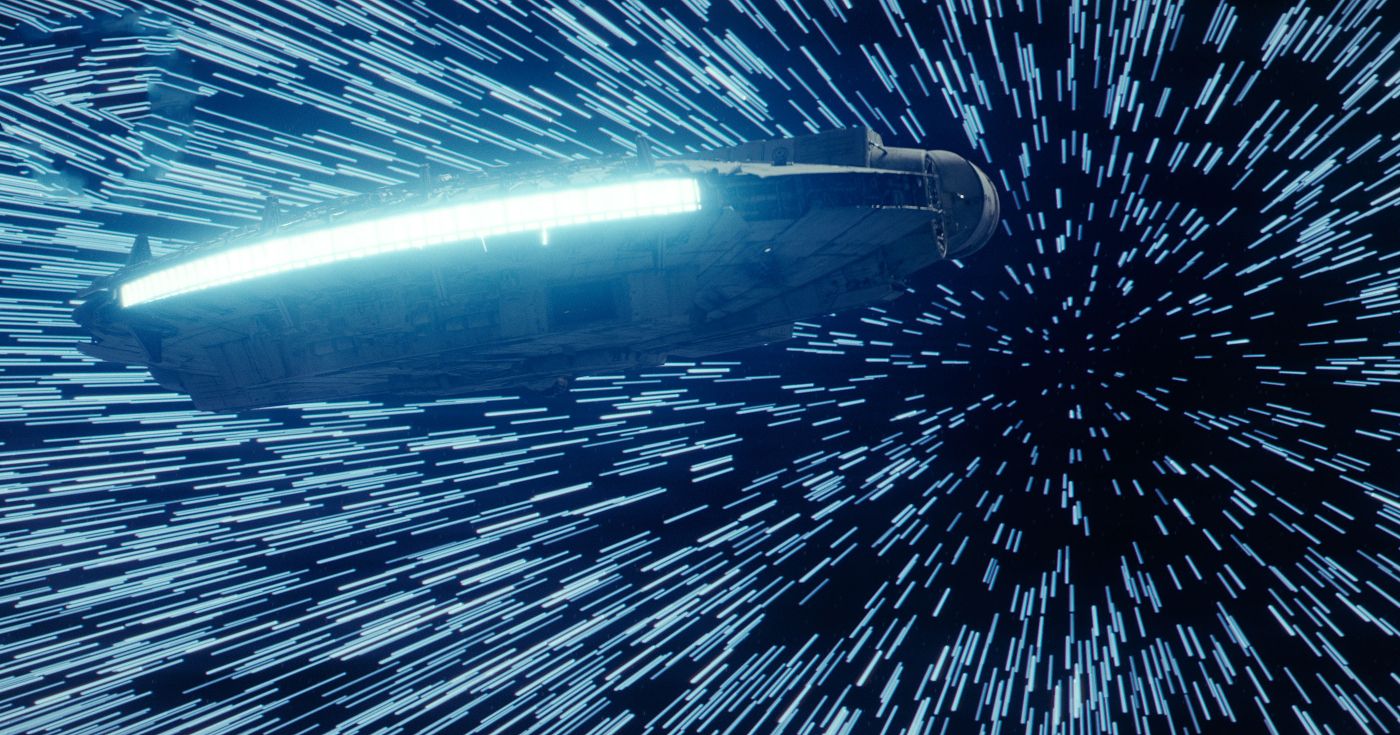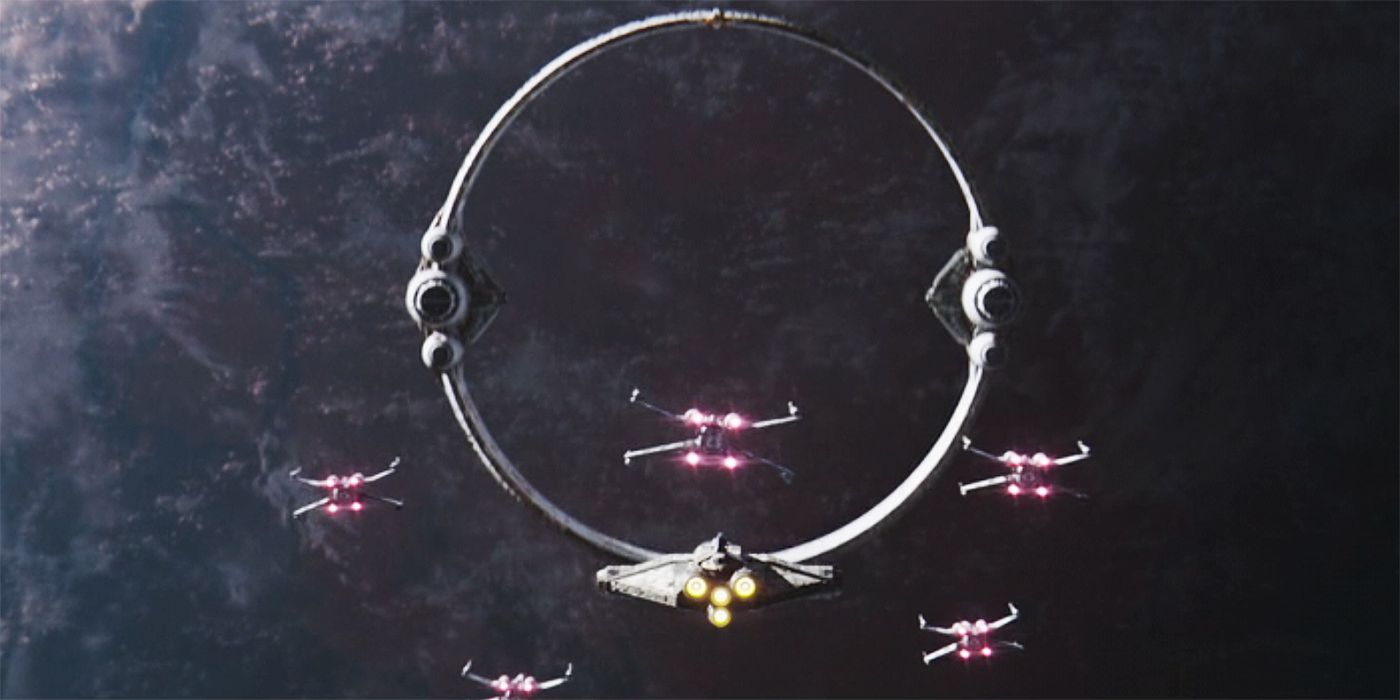The Eye of Sion finally took to hyperspace in Episode 4 of Ahsoka, and we’re counting the seconds until we get to see Grand Admiral Thrawn’s (Lars Mikkelsen) debut in live-action. The ring-shaped starship jumped to hyperspace after finally getting the coordinates to Peridea, far from the borders of the known galaxy, and left our heroes Ahsoka Tano (Rosario Dawson) and Hera Syndulla (Mary Elizabeth Winstead) with a huge problem to crack if they want to stop Thrawn’s return and find the lost Jedi Ezra Bridger (Eman Esfandi).
Part of this problem is that we can’t be sure of how much time they have to figure out a way to get there because there’s no way of knowing how long Morgan Elsbeth’s (Diana Lee Inosanto) ship will take to reach Peridea in the first place. That’s so not only because of the huge distance, but also because no one knows how long hyperspace travel is supposed to take in Star Wars. In all the existing canon and the old Expanded Universe (now the Legends label), no one managed to officially explain how this kind of travel actually works, a ratio between space and time traveled, nothing. We’re terrible with theoretical physics ourselves, so we can’t do it, either, but we can look at how this kind of travel works and see why no one has dared quantify it. Punch it, Chewie!
What Is Hyperspace in Star Wars?
To answer this question, let’s begin by clarifying that there are two different types of space travel in Star Wars: sublight and lightspeed. The first is how starships usually get around and travel short distances on the galactic scale, like traveling inside the same star system, for example. This takes place in what’s called “realspace,” the standard dimension where events take place. Whenever sublight travel occurs, it’s on realspace, where everything looks just like we know space to actually look like.
The second way, lightspeed, is a concept that a lot of fans have been trying to grasp for decades, but that not even in-universe storytelling has managed to fully make sense of. In principle, lightspeed is what happens when a ship uses its hyperdrive (a special kind of engine) to travel at speeds faster than that of light. It kind of makes sense for us — if you have the distance and average speed a ship can achieve, we can do the math, right? But it’s more complicated than that. If sublight travel takes place on realspace, lightspeed happens in a whole separate dimension, the one we popularly call hyperspace. This is a realm where the very idea of a correlation between space and time is bent, so things can’t be calculated. The rules that apply to realspace don’t work on hyperspace, because those are two separate realms of reality.
That’s not to say it doesn’t make any sense, though. We still have a starting point and a fixed destination, and that’s what pilots use to guide how they go from one place to another. In A New Hope, for example, Han Solo (Harrison Ford) offers Luke Skywalker (Mark Hamill) the best explanation we currently have of how it works: “Without precise calculations, we could fly right through a star or bounce too close to a supernova, and that’d end your trip real quick, wouldn’t it?” That’s why knowing your exact destination is so important for everyone who’s using lightspeed travel, as well as what direction they are moving towards. Now, about that…
How Did Hyperspace Traveling Start in Star Wars?
To understand how to calculate the data to perform a hyperspace jump, it’s important to understand the trajectory between the starting point and the destination. But in space that’s not so easy because, as Han explains, there are lots of celestial phenomena that may occur along the way, so it’s better to have a path to follow. That’s where the importance of hyperspace in Ahsoka becomes evident, and not just because of the sheer distance between the known galaxy and Peridea, but also because of the giant space whales seen in Episode 3, the purrgil.
The purrgil are the beings that helped create the whole mess that Ahsoka Tano and the Star Wars Rebels characters are now trying to deal with. At the end of the animated series, Ezra Bridger (then voiced by Taylor Grey) called upon the purrgil to hijack Thrawn’s Star Destroyer Chimera with both of them inside, and that’s how they vanished. They can jump to hyperspace naturally and go even further than starships with a hyperdrive — in fact, that’s why the Eye of Sion has multiple hyperdrives. Lightspeed traveling as a concept was initially inspired by the purrgil. Millennia before the events of the Skywalker Saga, space engineers observed the purrgil and designed the first hyperdrives to try and emulate how they jump to lightspeed.
Another important aspect of how the purrgil move through hyperspace is that they have previously established routes. Being space whales, they share with their real-world counterparts the habit of migrating, and that’s how the first hyperspace routes were established, by following their migration paths. In the Ahsoka end credits, the star map even shows two of those hyperspace lanes, the Corellian Run and the Perlemian Trade Route. But those are just a few of these routes, and the purrgil don’t usually travel in a straight line. Migrating often involves stops along the way, the purrgil just did most of it outside the borders of the known galaxy. Inside, though, they were key to helping establish hyperspace lanes and connect distant points of the galaxy, and this is how pilots can make their calculations before jumping to lightspeed. A hyperspace lane is certified to be safe, while smaller jumps tend to be more dangerous — looking at you and your lightspeed skipping, Poe Dameron (Oscar Isaac).
Do We Know How Long the Journey in ‘Ahsoka’ Is Going To Take?
That’s the fun part: we can’t know. Hyperspace is one of the defining traits of Star Wars lore, something that’s unique to the franchise created by George Lucas. Many works have similar notions, like Star Trek and their warp cores or Dune and their Guild Navigators, for example, but none of those work like the hyperspace because, essentially, there are no fixed rules for how it’s supposed to work in Star Wars. We have the notion that it’s a separate dimension that the purrgil helped access, but there are still no rules as to how things work inside hyperspace, time the correlation between space and time, as we’ve mentioned before.
This is what makes hyperspace such a unique storytelling device for Star Wars: lightspeed traveling can take as much as it needs to take for the story to develop the way it needs. For example, in The Rise of Skywalker Rey (Daisy Ridley) and Kylo Ren (Adam Driver) go around the galaxy many times in a short period of time. When a fan asked Lucasfilm Storygroup member Matt Martin about this on social media, he answered that “hyperspace travels at the speed of the plot,” although it might be difficult to justify. A year later, another Storygroup member, Pablo Hidalgo, mentioned how he once tried to calculate this himself in the past but warned against doing this because “it isn’t very Star Wars.”
What both Martin and Hidalgo are getting at is that hyperspace isn’t supposed to make sense to begin with, and that’s why it’s such a fun aspect of Star Wars. The fact that it doesn’t comply with specific measurements allows for any story to use it the way it needs to, without having to adjust to previously established lore based on accurate scientific data. Star Wars is more fantasy than science fiction, and even hard sci-fi works don’t spend that much time explaining their concepts because it takes away from the magic and sense of wonder we get as an audience. Things happen the way they are supposed to happen, and that’s enough for anyone to be able to enjoy a story without having to draw a calculator.
Denial of responsibility! TechCodex is an automatic aggregator of the all world’s media. In each content, the hyperlink to the primary source is specified. All trademarks belong to their rightful owners, and all materials to their authors. For any complaint, please reach us at – [email protected]. We will take necessary action within 24 hours.
Khushi Patel is a science fiction author who lives in Austin, Texas. She has published three novels, and her work has been praised for its originality and imagination. Khushi is a graduate of Rice University, and she has worked as a software engineer. She is a member of the Science Fiction Writers of America, and her books have been nominated for several awards.



